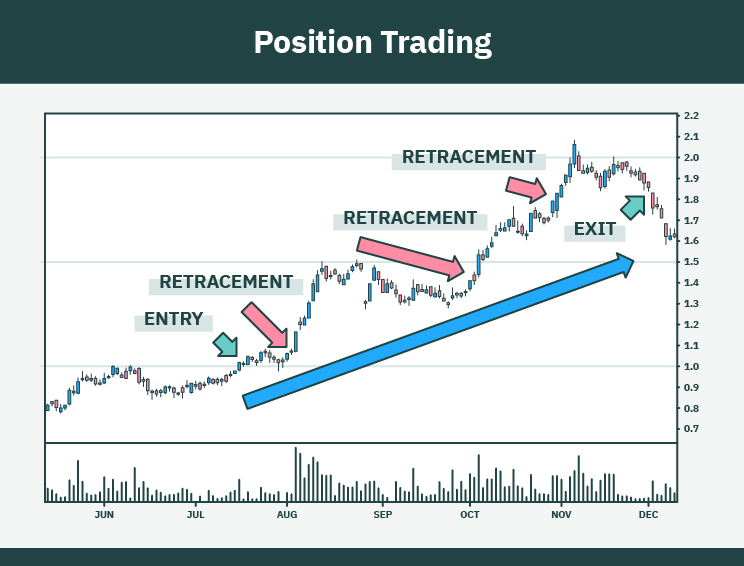Traders are not all alike. Not everyone with a trading account has strengths and weaknesses that compliment all types of trading. While the highly agile minds prefer to play in the day trading playground, the slightly calmer individuals prefer to trade with the swings in the price of stocks.
On the other hand there are also investors that put their money onto reliable stocks and practically forget about it. Positional traders stand somewhere between swing traders and investors.
What is Positional trading?
Positional traders mostly don’t act on short-term fluctuations of a stock’s price as they are interested in knowing what is position in stock market. They expect to book profits by trading the stocks, like swing traders.
However, they hold it for a long time unlike swing traders, capitalizing on strong long-term trends. Positional traders don’t focus on the short term fluctuations of the stock’s price, and remain confident that the trend will revive itself and continue.
Positional traders sometimes make use of the futures option in the stock market. This helps them in handling unexpected shifts in the price trend. Futures are a useful tool to diversify their portfolios across various asset classes, and perhaps even engage in speculative trading.
Key Aspects of Positional Trading
Identifying trends: Trends are the lifelines of positional trading. Traders must look for stocks that promise a strong upward or downward movement, and it helps if the prediction is backed by solid fundamentals.
It is important to note the difference between pullbacks and retracements in the stock’s price and the stock’s long term trend. These short term fluctuations should not confuse a positional trader.
1. Timeline
The timeframes involved in positional trading are often long, and patience is a key virtue in this process. While the traders should remain patient, it’s also crucial to know when to act. For this reason, it would help if there is a clear timeframe set by the traders to act on. One should also have the discipline to stick to the set timeframe.
2. Overtrading
Positional traders are relatively less active on the market and hence it’s important to avoid overtrading. There is a risk of spreading yourself too thin with overtrading. Overexposure can result in higher risk as well.
Meanwhile, this can also affect the quality of their trades and leave them less focused on their priority stocks. Overall, positional trading works best when the number of trades are minimal.
3. Risk Management
Since the number of trades are kept minimal it becomes even more crucial to handle risks sensibly. Setting stop-loss orders without fail can safeguard one’s capital to an extent and reduce the risk of losses.
4. Fundamentals
In any form of trade, it helps to keep oneself updated about the news and trends of the relevant stocks. However, when it comes to positional trading, the fundamentals are much more significant in comparison to analyzing trends and technical charts. Since the focus is on the long-term it is vital to pay attention to the news and the market changes that could affect the stocks one is following.
5. Scaling in and out
The predictions in the positional trading process are meant for the long-term. This means that the predictions can often go wrong. It helps if one consistently scales in/out depending on the movement of the stock.
For instance, if a stock is moving down unexpectedly and it looks more like a trend reversal than a pullback, it is advisable to scale out gradually as the downward movement persists.
Benefits of Positional Trading
Positional trading comes with a generous list of advantages. To begin with, the stress level is often less in this format, since constant monitoring of the futures in stock market changes is not required. This also means less commitment in terms of time, which allows people busy with their careers to be able to explore trading.
The profit potential that comes with positional trading is high. Since these trades are in for the long-haul, the value appreciation can be remarkable in size.
Trading in fewer stocks, which is the popular strategy for positional traders, also means that they would invest more money per trade. Hence, the profits booked by positional traders can be quite sizable.
Conclusion
In essence, positional trading can offer traders a balanced approach to trading, helping them capture long-term trends with reduced stress and minimal time commitment.




